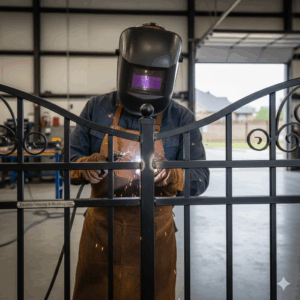Introduction
In an era where digital experiences shape decisions, the demand for high-quality visual communication in architecture, real estate, and design has reached new heights. Stakeholders want more than blueprints—they want immersive, realistic previews of spaces before they exist. That’s where the synergy between virtual tour software and 3D rendering services comes into play.
Combining the realism of rendered environments with the interactivity of virtual tours, this powerful duo enables designers, architects, and marketers to offer clients compelling, interactive experiences that go beyond static visuals. The result is a seamless journey from concept to comprehension, transforming the way projects are presented and perceived.
1. Turning Concepts into Immersive Experiences
Design concepts typically start with sketches and architectural drawings, which are essential but often abstract to the untrained eye. 3D rendering services transform these ideas into lifelike images that display scale, lighting, textures, and depth with precision.
However, static renders, no matter how realistic, can be limiting. This is where virtual tour software extends their impact. By integrating rendered images into interactive, panoramic environments, users can virtually “walk” through a design. Whether it’s a home, office, or showroom, the combined use of these technologies offers a dynamic and immersive experience that significantly improves spatial understanding.
2. Boosting Client Engagement and Decision-Making
One of the core advantages of blending virtual tours with rendering is enhanced client engagement. Clients are often visual thinkers; being able to move through a space virtually gives them a sense of control and familiarity that static presentations cannot offer.
A 3D rendering company provides the base visuals, but when those visuals are embedded into tour platforms, the result is interactive storytelling. Clients can explore layouts, view different finishes, and gain clarity on how the final build will look and feel. This not only aids understanding but accelerates approvals and minimizes the likelihood of costly revisions down the line.
3. Marketing Properties Before They’re Built
Real estate developers, interior designers, and construction firms benefit greatly from marketing spaces before completion. In competitive markets, being able to showcase a project ahead of time can be the difference between winning and losing a sale or investment.
Virtual tour software, powered by photorealistic imagery from a skilled 3D rendering company, gives potential buyers or investors a chance to emotionally connect with a property. Instead of relying on floor plans and imagination, users can experience the property firsthand from any device, anywhere in the world. This approach significantly enhances pre-sale strategies, allowing for faster project momentum and increased buyer confidence.
4. Enhancing Design Collaboration
Project stakeholders often include architects, engineers, investors, and clients—all with varying levels of technical expertise. Communicating effectively across this spectrum is a challenge. The combination of 3D rendering services and interactive virtual tours offers a solution that speaks a universal visual language.
These tools enable real-time collaboration by allowing users to review a space together, mark up feedback, or explore design alternatives. A reliable 3D rendering company can support this by generating high-resolution assets that adapt to different layouts and viewing modes, ensuring continuity across presentation platforms.
For firms working with an architectural visualization company, having access to both rendering and tour development streamlines workflows, improves feedback accuracy, and ensures all team members are aligned throughout the design phase.
5. Staying Competitive in a Digital-First Industry
The growing emphasis on digital engagement has made these tools more than just a luxury—they’re a necessity. Clients and stakeholders now expect a digital-first presentation approach, and companies that can’t meet this expectation risk falling behind.
By partnering with a professional 3D rendering company, businesses gain access to high-quality visuals that reflect true-to-life designs. When paired with cutting-edge virtual tour software, these visuals become interactive assets that can be used across websites, sales presentations, investor pitches, and more.
More than just tools, they represent a brand’s commitment to innovation, detail, and customer experience. This blend of technology ensures businesses stay relevant and competitive in a rapidly evolving marketplace.
Conclusion
The combination of virtual tour software and 3D rendering services is revolutionizing how design projects are presented and experienced. From creating immersive walkthroughs to facilitating better communication and increasing marketing potential, this synergy is an essential asset for any firm operating in architecture, real estate, or design.
Working with a trusted 3D rendering company ensures that visuals maintain the quality and realism required for professional presentation. For those seeking a comprehensive digital strategy, partnering with an experienced architectural visualization company can unify the process—delivering stunning renderings, seamless virtual tours, and an unmatched client experience.
In a world where visualization influences decisions, embracing this synergy means transforming how we bring ideas to life—and how clients see the future before it’s built.








